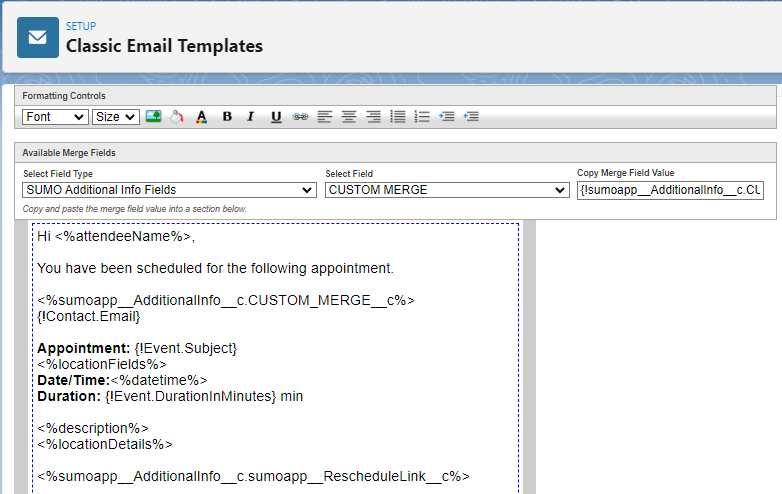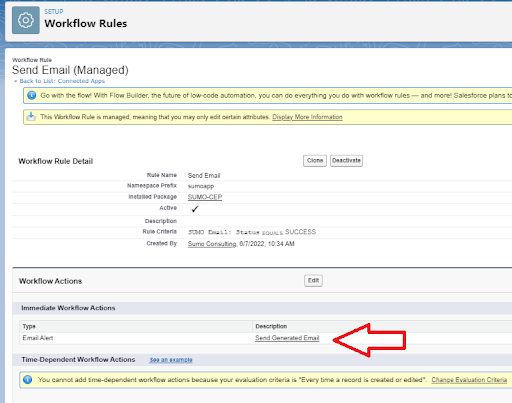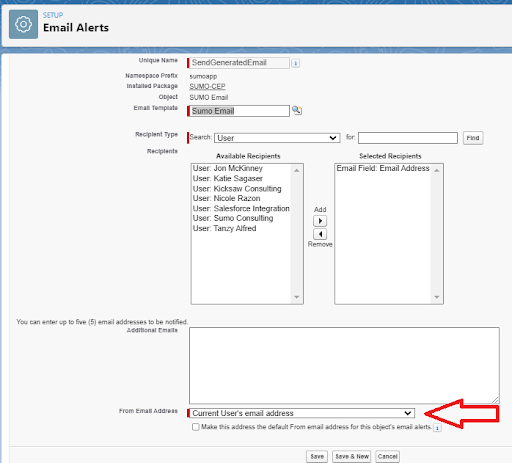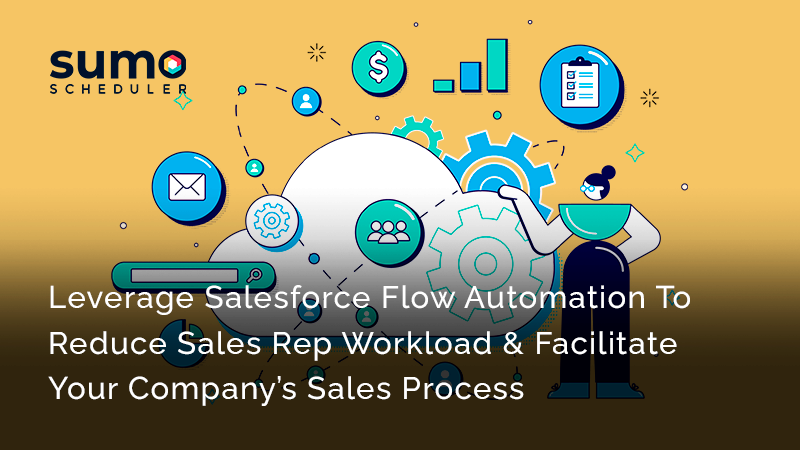The role of the modern Salesforce administrator has evolved to encompass a broad set of responsibilities. Today’s admin is expected to collaborate with sales and marketing leadership to optimize technologies and processes that drive revenue growth, improve customer experience and ensure data integrity. To do so, they must have a deep understanding of their business’s go-to-market processes, customer needs, and the software technologies that turn company strategy into action.
In this article, we will explore the importance of modern Salesforce administrators and how they can leverage Salesforce automation alongside native applications to foster improved customer engagement, drive team collaboration and improve data management.
1. Email Automation: Automate Customer Engagement & Calls to Action
Automated scheduling platforms have revolutionized the sales and support processes by streamlining appointment booking, reducing manual workload for sales and support teams and providing customers with convenient self-service options that enhance their experience.
Salesforce admins can help their businesses to drive sales process efficiency and velocity by leveraging tools such as SUMO Scheduler alongside Salesforce’s flows and email alert capabilities to automatically send appointment invitations to prospects and customers. Salesforce Flows can be written to control when the invite is sent based upon the completion of specific data fields on the contact record. This can be done by creating a trigger that monitors changes to relevant fields on the participant record and launches the flow.
By automating this process, you can ensure that potential customers are always given the opportunity to schedule an appointment when they are ready, without the need for manual intervention from your sales team. This can help to improve conversion rates and streamline the sales process, ultimately leading to more successful outcomes for your organization.
Examples of process improvements:
- Record update triggers flow to send emails with an invite link.
- Implement automation to route support tickets to the appropriate agents or teams based on their expertise or workload.
- Set up automated processes to calculate and update opportunity forecast based on historical data and sales trends, etc.

2. Automated Subject Updates – Make Your Appointments Stand Out On Customers’ Calendars
Customer-facing meetings are the lifeblood of any sales and support rep’s business – Missed or canceled appointments directly impact their goals and bottom line. Fortunately, by leveraging simple Salesforce flows in conjunction with appointment scheduling automation, admins can help their customer-facing teams reduce cancellations and increase appointment participations.
One way to do this is by updating the appointment subject to include the participant’s name and phone number. This makes it easier for clients to identify important appointments with your team, ensuring that they remain top of mind. This is important because most clients use their external calendar as the source of truth, and updating the subject line with this information provides greater flexibility and transparency for both parties involved. This is especially important if the client is juggling multiple appointments and needs to quickly reference the details of each one.

Source: SUMO comes with many email templates out of the box that you can customize to fit your needs.
Updating the appointment subject line also takes into account any internal meetings that may be taking up the participant’s availability. By allowing for flexibility in scheduling, you can ensure that appointments are scheduled at a time that works for both the client and the participant, without the need for manual intervention.
At the same time, maintaining the meeting category within Salesforce allows you to keep accurate records and generate valuable insights into the sales process. You can still track the meeting category and other relevant data points within Salesforce, while ensuring that the end user doesn’t have to go to Salesforce to find the information they need.
Overall, updating the subject of the appointment to include the participant’s name and phone number while maintaining the meeting category within Salesforce is a powerful way to optimize your sales process and improve the end user experience. By providing accurate and efficient reporting while also personalizing the meeting experience, you can drive greater success for your organization and strengthen relationships with potential customers.
3. Using A Different Email Field
As a Salesforce admin, you understand that every customer has unique needs and requirements, and that flexibility is key when it comes to meeting those needs. That’s why the ability to use a different email field other than the standard Salesforce email field is a powerful tool for admins.
First, it allows Salesforce admins to provide greater customization for their clients and a more personalized experience that meets their specific needs.
For example, a client may want to use a specific email field for regulatory compliance or to meet internal company policies.
Second, it can help to improve the accuracy of notification delivery.
Sometimes, the standard Salesforce email field may not be the most accurate or up-to-date source of contact information for a participant. By allowing clients to choose a different email field for notifications, admins can ensure that notifications are delivered to the most accurate and up-to-date email address.


Source: Salesforce allows you to define and manage email addresses that can be used as the “from address” when sending an email through Salesforce.
Third, it can help to improve efficiency and automation.
By automating the process of selecting the appropriate email field for notifications, Salesforce admins can save time and reduce the risk of errors or manual input mistakes. For example, if a client wants to use a specific email field for notifications based on a certain set of criteria, this can be easily set up using flow automation, saving time and reducing the need for manual input.
Practical examples of the use of a different email field for notifications could include:
- A client who wants to use a different email field for appointment notifications based on participant location, so that notifications are sent to a local email address.
- A client who wants to use a different email field for appointment notifications based on the type of participant, such as a customer vs. a partner or vendor.
- A client who wants to use a different email field for appointment notifications based on the type of appointment or meeting, such as a sales meeting vs. a training session.
Overall, the ability to use a different email field other than the standard Salesforce email field for SUMO Scheduler appointment notifications provides greater flexibility and customization for clients, improves accuracy and efficiency, and allows Salesforce admins to better meet the unique needs of their clients.
4. Automate lead creation in Salesforce when an appointment is booked
Leveraging a Salesforce native scheduling tool can help your sales team to automate the lead creation process and ensure that all prospect information and demographics are accurately captured in your CRM.
As soon as an appointment for service A is scheduled, the system will automatically generate a corresponding lead in Salesforce with all the relevant fields populated. It can save valuable time for both the sales rep and the admins while also ensuring that your sales org remains free of redundant contacts and data errors.
Let’s see some real Use Cases.
- Medical Clinics:
A medical clinic using Salesforce can integrate its appointment scheduling system with the CRM. When patients book appointments for specific services or treatments, a corresponding lead is automatically created in Salesforce. This lead can contain important patient information, appointment details, and the service required. This automation streamlines the patient onboarding process, reduces manual data entry for the clinic staff, and ensures accurate and up-to-date patient records. - Education Institutions:
Educational organizations can use Salesforce to manage student admissions. When prospective students schedule appointments for campus tours or admissions consultations, the scheduling tool can trigger the creation of a lead in Salesforce. This lead can include the student’s contact information, academic interests, and appointment details. The automation helps admissions teams to efficiently track and manage prospective students, ensuring personalized interactions and a smoother enrollment process. - Financial Services:
Financial institutions can leverage Salesforce to automate lead creation when clients request consultations or financial advice. When clients schedule appointments with financial advisors through an online scheduling tool, a lead is automatically generated in Salesforce with relevant client information and appointment details. This automation allows financial advisors to have a complete view of client interactions, track follow-ups, and provide personalized financial advice.
By automating lead creation in Salesforce when appointments are booked, businesses across various industries can enhance their sales processes, improve customer experience, and optimize their CRM data management.
In conclusion, automated scheduling flows on Salesforce can be used to make work more simple and reliable, especially when it is used with the automated online scheduling application SUMO Scheduler. The combination of these two tools provides a seamless and efficient scheduling process that saves time, reduces errors, and improves customer satisfaction. Businesses that want to streamline their scheduling process and improve their performance should consider using automated scheduling flows on Salesforce with SUMO Scheduler.
By embracing automation, Salesforce administrators can drive significant improvements in efficiency, productivity, and overall business performance. So why wait? Join the automation revolution today and take your sales team to the next level!
Ready To Try SUMO?
Schedule a call for a quick demo or
start your free trial on Salesforce AppExchange


